When designing a book cover, a number of items need to be considered. What is the genre? The mood of the story? The background setting? What type of “look” do you want to get across? Is this best done with photography or illustration? Do you like people on the cover? Can you describe a particular scene you envision, or images that might work?
When I contacted Patty G. Henderson from http://boulevardphotografica.yolasite.com about doing my cover for a revised edition of Hair Raiser (Bad Hair Day Mystery #2), I gave her a basic summary of the plot. Hairstylist Marla Shore volunteers for Taste of the World, a fund-raiser to benefit a coastal preservation society. Someone is sabotaging the chefs involved in this gala event set in South Florida. I wanted to blend elements of the tropical setting with the food theme and also give a hint about the murder mystery.
I mentioned Bonnet House to Patty. This Fort Lauderdale historic attraction served as the model for cousin Cynthia’s estate in the story. Photos on their website could provide inspiration. After a while, Patty sent me these two mock-up covers for my initial inspection. What did I like or dislike about them? What should we change?
I was awestruck at how Patty instinctively understood my brand as an author and the genre in which I write. Since I write humorous cozies, I’ve noticed these covers are mostly illustrations rather than photographic portrayals. Readers like me want to be able to tell the genre at a glance. I had sent her a list of covers on Amazon that appealed to me as a reader. This mockup got the concept just right.
Patty covered the murder mystery aspect perfectly with the bloody scissors. She got the chef part of the plot correct with the serving dish. And she got the seaside location fine. However, Florida doesn’t have mountains. So that hill behind the building had to go. I’m also not fond of pastels. I like sharp, bright colors representative of the tropics. But I did like the green, coral, beige, and turquoise tones. However, they needed to be sharpened and made darker.
On proof number one, the cover on the above left, the title font is cute and appropriate to a humorous mystery. But it’s too light. So is my name. And from far away, you can’t see the series title at all.
On proof number two, I don’t care for the series logo either. We need a different symbol than the shears because Five Star uses them on my new titles. And this wave design would have to be carried through on subsequent books in the series. I liked the one on the left but that wording doesn’t show up. So let’s get rid of the wave altogether and work on a series title that’s more visible.
These are better with brighter colors and sharper wording. Looking at proof number 3 on the left, I note the mountain is gone. I like my name at the top in dark green. The top of Hair Raiser, though, is hard to see because of the busy background elements. And I’m not crazy about the three combs. They’re cute but show no element of mystery.
Number 4 on the right is better. But oops, the mountain is back. I like the title font, color and placement. I like my name where it is but more to the right, so it’s all in the turquoise section. And I like the crossed teasing combs for the series logo but not dividing up the wording. What if we move the series logo above my name? That might work.
“Is this the winner?” Patty asked. “Oh, yes,” I replied. ”It’s perfect.” Finally, we had our cover! I do love it, the images, the fonts, the colors—everything.
But were we done? Not yet! Next came the paperback edition. What did I want on the back side? A solid color or some of the front image? Did I want the book title at the top of the back or the series title? What do we want on the spine? And so here is the final result of this process:
It requires a lot of patience between both parties to get things done just right. But the results are definitely worth the thrill you get when everything falls into place.
To contact Patty G. Henderson, go to http://boulevardphotografica.yolasite.com/
Join my book launch party on Tuesday, Jan. 27, from 6:00 – 8:00pm EST at https://www.facebook.com/NewReleaseParty for Fun and Giveaways!
HAIR RAISER Buy Links:
Kindle: http://amzn.to/14M9l5B
iBooks: https://itunes.apple.com/book/hair-raiser/id957020158?mt=11&uo=4&at=113vsrx
Kobo: http://store.kobobooks.com/en-US/ebook/hair-raiser-2
Nook: http://www.barnesandnoble.com/w/hair-raiser-nancy-cohen/1017599109?ean=2940149980222
International: http://bookgoodies.com/a/B00S4VCUM8
Print Edition: https://www.createspace.com/5253406
Add to Goodreads List: https://www.goodreads.com/book/show/24478683-hair-raiser











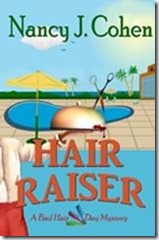



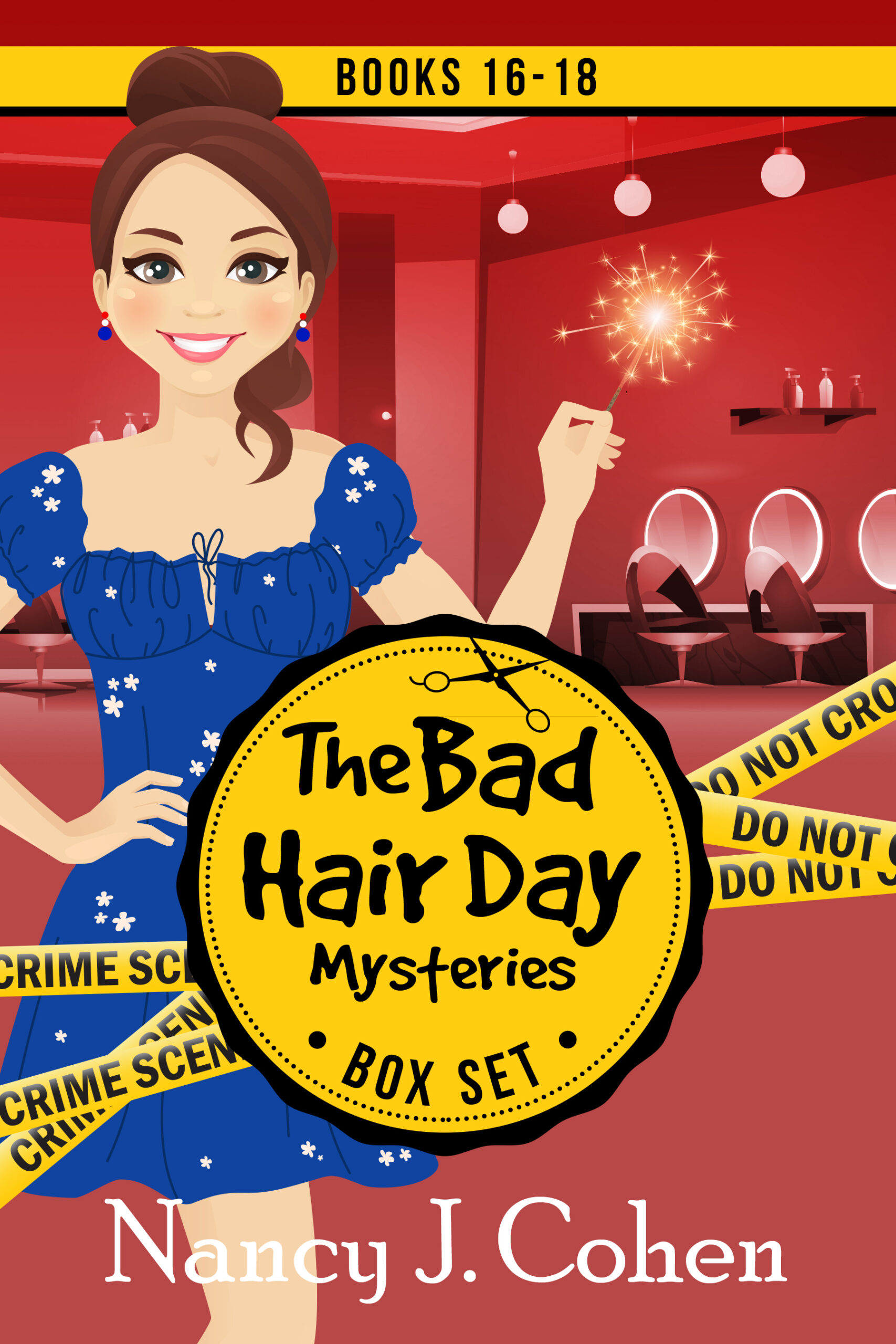







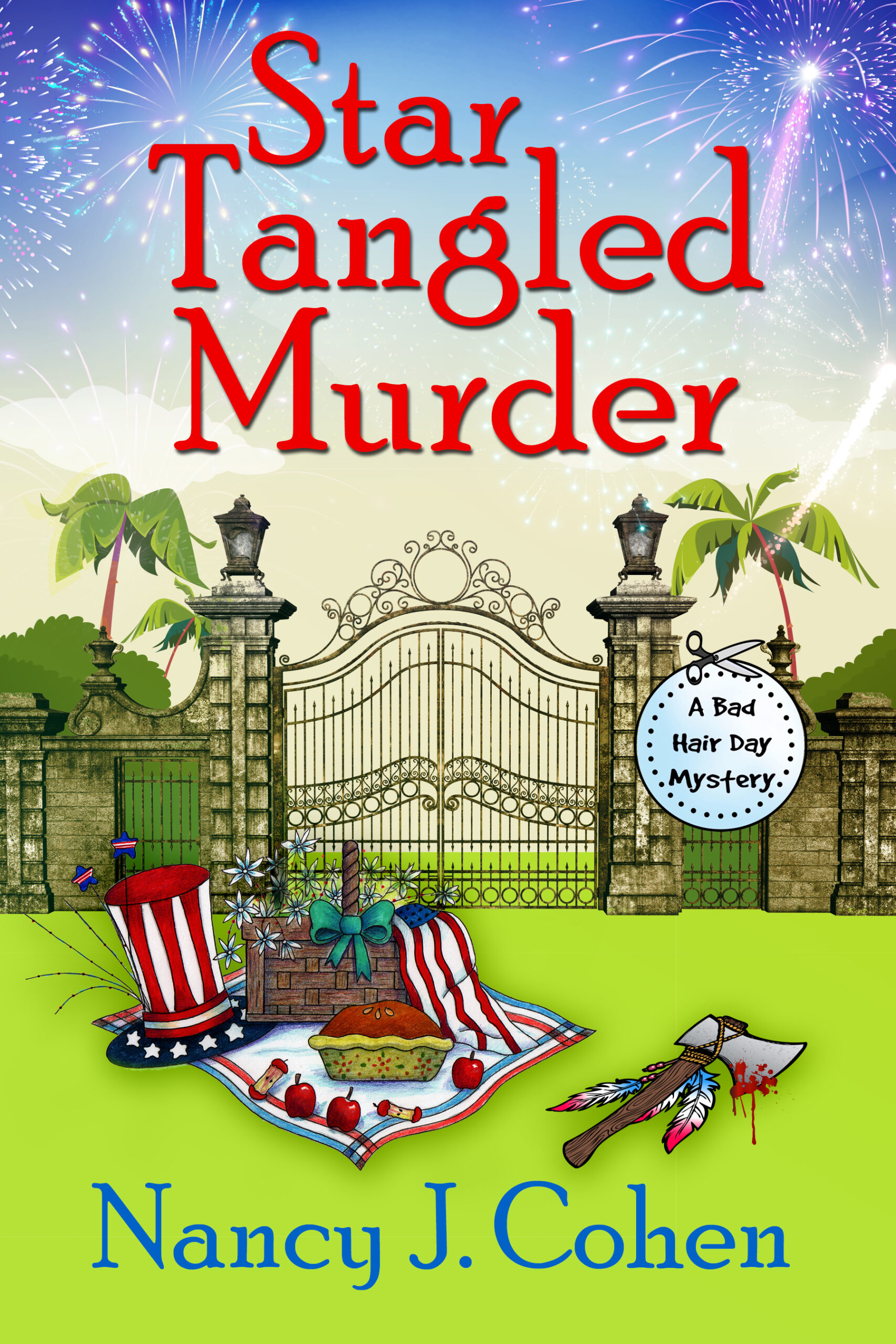

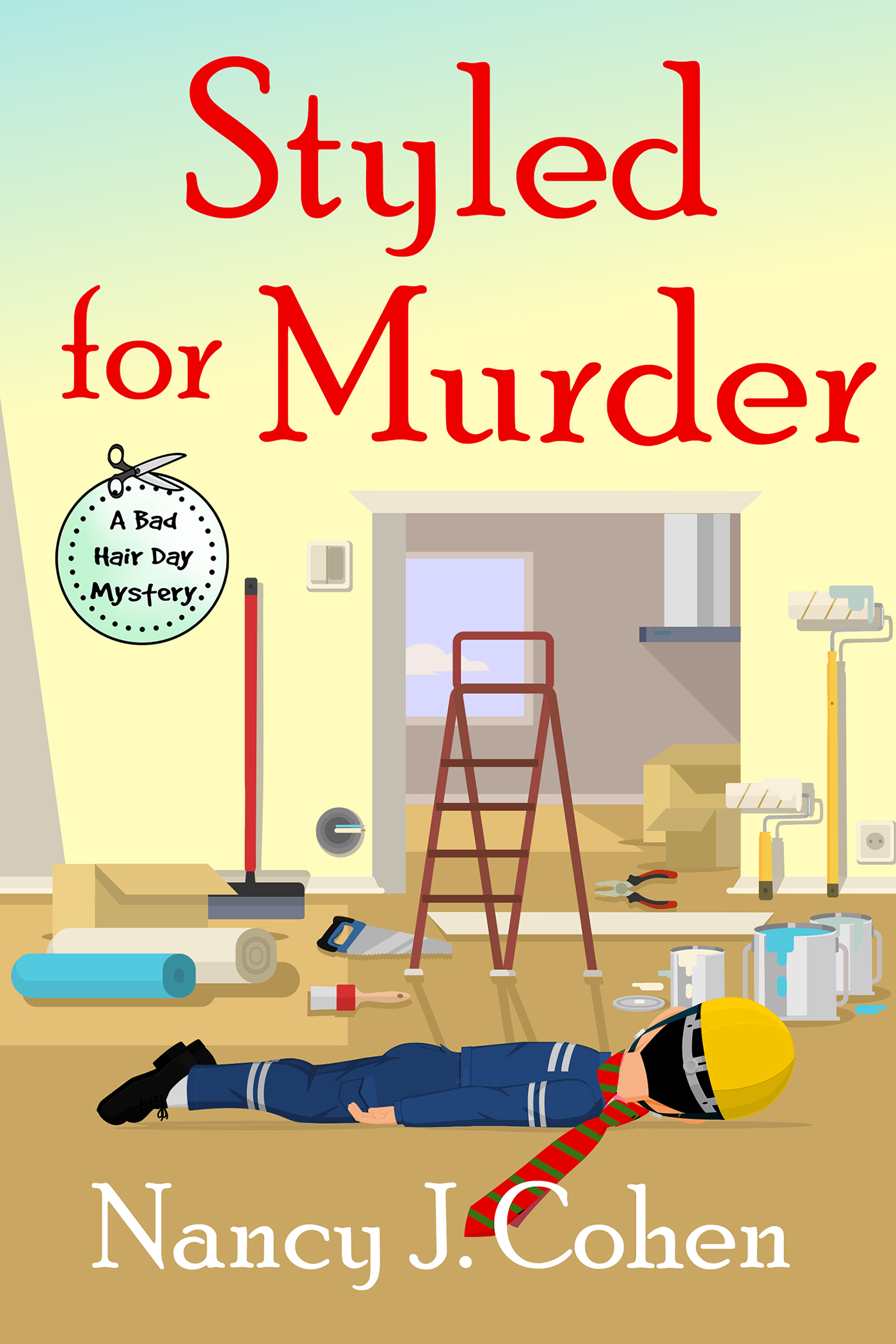
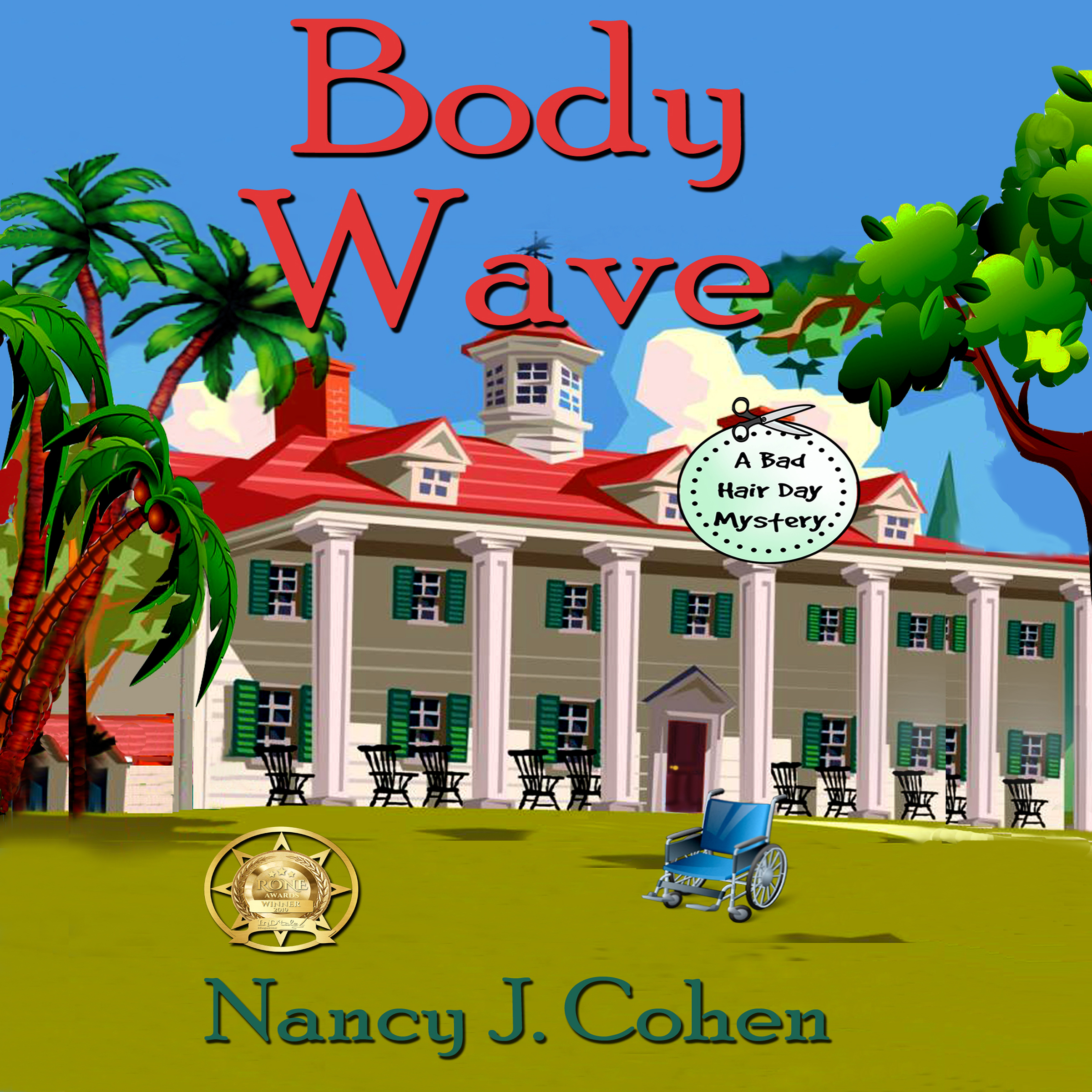


Nice cover. Important to remember that the “postage size” covers you’ve depicted is what most readers will see before they buy. A 6″ X 9″ cover may look great, but how will those names and details register when a person goes online to purchase.
The thumbnail image is important. I stood a distance away from my computer to see what stood out and what shrank. And this cover works on Amazon. So hopefully the important images will be noticeable.
Great example of the process of working to get a cover just right. I recently worked with my graphic artist on a couple of new covers, and we went through a similar process. Luckily, she, like your artist, gets the brand right away, so the rest is just small stuff.
It’s great that you found a designer on the same wavelength.
Thanks for this great lesson. I am working on my first cozy. Here’s my question: Should I put the series title on the first book since it isn’t technically a series yet? Also, do you think it is a good idea to number the books in a series? Thanks.
If you intend this to be the start of a series, by all means put the series title on the cover. I would not add the number on the cover. That could deter people from picking up book 2 or 3, for example, because they want to read #1 first.
Thanks for sharing the process. My cover artist and I work in very much the same way, and it’s so important to have someone who will work with you until it’s “right.” With traditionally published books, input is minimal beyond a cover art sheet. Often, it’s “Did we get the title and your name right?” and if the answer is “yes” then you’re stuck with whatever they produce. My cover artist has branded “me” with the way my name appears on my books regardless of the series, and then the series with title fonts, so for new projects in an existing series, we have a lot of the preliminary work out of the way and can concentrate on the images.
Hopefully the process will be easier for us hereafter too, with the fonts and placements decided with this first book. That’s why it is critical to make these decisions up front with your designer. Your titles at a glance, Terry, register your brand.
Great cover art! I’ve heard of Patty before and know she does excellent work.
Thanks. I love working with Patty.
Thanks for this very educational post. I also appreciate the links.
Thank you for stopping by!
Love the cover and enjoyed hearing about the process. Thanks for sharing.
Thank you, Sandra. I’m glad you could stop in and I appreciate the comment.